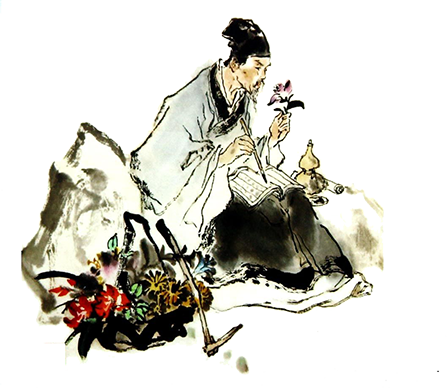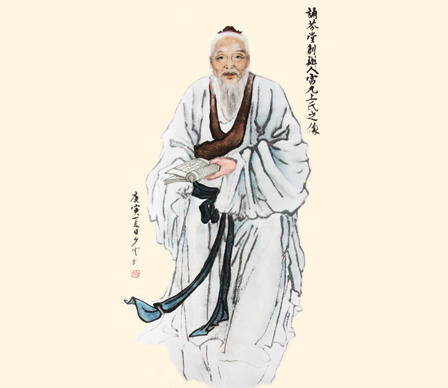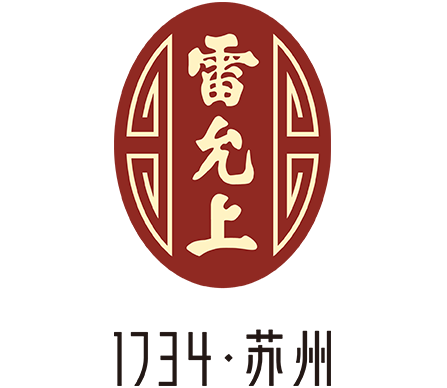-

Suzhou, as a famous historical and cultural city with a long standing reputation in China, was called “Wuzhong”, “Wuxia” and “Sanwu” in history. It has been established for more than 2,500 years. As early as the Spring and Autumn Period and the Warring States Period, Suzhou was the capital of the Wu State. It was later the capital of the county, prefecture and province, and the famous metropolis in the regions south of the Yangtze River. It is known as the “l(fā)and flowing with milk and honey” because of its developed culture, beautiful environment, warm and humid climate and prosperous business. The rich deposits of Wu Culture has not only added vitality to the development of Wuzhong Medicine, but also provided rich cultural accumulation for the formation of Wuzhong Medicine. If the rich and beautiful Wu Culture is the source of science and art in Wuzhong, then the long-standing and exquisite Wu Medical School is its flow.
Wuzhong Medicine can be traced back to the Spring and Autumn Period and the Warring States Period. According to Ge Hong’s The Tales of Immortals, Shen Xi, the native in Wuzhong in the Zhou Dynasty, learned Taoism in Shuzhong. He refined elixir and made pills which often worked wonders for people. This is the earliest record of Wuzhong doctors and the earliest record of Jiangsu doctors.
Wuzhong Medicine formed a medical school – the Wu Medical School, which started from the end of the Yuan Dynasty and the early Ming Dynasty. Dai Yuanli, a famous doctor in Zhejiang, came to Suzhou to practice medicine. If the patient is a native in Wuzhong, Dai Yuanli would charge five Liang for the prescription. Because he was the apprentice of the Jinyuan famous doctor Zhu Danxi, and his medical skills were superb, he won the reputation rapidly. Wang Bin, a native in Suzhou, went to visit him to consult medicine. Under his guidance, Wang Bin read the Internal Canon of Medicine and the Suwen, and obtained the ten volumes of Zhu Danxi’s Yanxiu Medical Case hoarded by Dai Yuanli, thus inheriting the academic experience of diagnosis and treatment. Since Wang Bin had no children, he passed the book on to his student Sheng Yin when he was about to die. According to the History of Ming Dynasty ? Fangjizhuan, “After learning the medical skills of Dai Yuanli, Sheng Yin began to study the medical books such as Internal Canon of Medicine, and gradually became famous. He served as a medical instructor in the early Yongle Period.” In the early Ming Dynasty, Ge Yinglei, a native in Suzhou, was very famous for his medical skills. According to the History of Ming Dynasty ? Fangjizhuan, “At that time, the medicine of Liu Shouzhen and Zhang Jiegu in the north were not popular in the south. There is a person named Li, who is a famous doctor in Zhongzhou and an official in Suzhou. He talked with Ge Yinglei about medical skills, and was greatly surprised. He sent Ge the medical books of Zhang Jiegu and Liu Shouzhen. Since then, the two schools of medicine have spread in south of the Yangtze River.”
Wang Bin and Sheng Yin inherited and spread the theory of Zhu Danxi, while Ge Yinglei inherited and spread Zhongyuan Medicine represented by Liu Wansu and Zhang Congzheng in the north. Thus, the Wu Medical School was started. According to Yang Xunji’s Sutan, “Suzhou medicine has flourished since then.”
During the period of Zhengde, Xue Ji, a native in Wuxian County, the officer of the Imperial Hospital, “he experienced two dynasties; he was in charge of the north and south hospitals; he read a lot of secret recipes and odd recipes of traditional Chinese medicine, and made friends with famous scholars from all corners of the country; he was very knowledgeable”, “therefore, he was able to detect symptoms and adopt treatments that worked immediately”. He collated and annotated Wang Lun’s Collection of Experiences of Famous Physicians in the Ming Dynasty. Qian Wei said in the preface of the annotated book, “I heard that the spread of Liu Wansu and Zhang Congzheng’s medicine started from Ge Yinglei. Since then, Wang Andao and Zhao Liangren et al have written Huitong, Yiyun, Yaoyao and other books respectively. Therefore, this is the origin of the rise of Suzhou Medical School after Xue Ji.”
The person further known as “Wu doctor” is Tang Dalie, a medical instructor of Suzhou Prefecture during the reign of Emperor Qianlong in the Qing Dynasty. He modeled the style of Wuzhong Medical Cases of Guo Mengqi, a native in Suzhou during the reign of Emperor Kangxi, collected the medicine treatises in Suzhou, Wuxi and Changzhou to compile them into eleven volumes of the Wuyi Huijiang, which was first carved in the 57th year of Qianlong (1792). Since then, the name of “Wu doctors” has become popular in the world.
From the publication of Wuyi Huijiang to the rise of the Epidemic Febrile Disease School, the characteristics of “many famous doctors, many imperial doctors and many medical books” of the Wu Medical School were gradually formed. The Wu Medical School not only created the peak of traditional Chinese medicine, but also established the famous theoretical system of theory of epidemic febrile disease. In the formation of the Epidemic Febrile Disease School, Wang Lyu, Wu Youke, Ye Tianshi and Xue Shengbai were the representatives. Wang Lyu, the pioneer of the Epidemic Febrile Disease School, wrote the Yijing Suhuiji; Wu Youxing, the founder of the Epidemic Febrile Disease School, wrote the Treatise on Pestilence - the earliest treatise on pestilence in China; Ye Gui (Ye Tianshi), the founder of the theoretical system of the Epidemic Febrile Disease School. The Treatise on Epidemic Febrile Diseases written by Ye Gui, perfected the theoretical system of the theory of epidemic febrile disease, established and promoted the appearance of the Epidemic Febrile Disease School in Wuzhong.
For hundreds of years, the “Wu Medical School” has experienced ups and downs. The inheritors of the Wu Medical School have been very few. Since 1715, Lei Yunshang, as a China time-honored brand of 300 years, has always regarded the development of traditional Chinese medicine culture and promotion of the Wu Medical School as a sacred responsibility and mission.
-

Suzhou has a long history of traditional medicine, which flourished in the Ming and Qing Dynasties and gradually formed a school with the characteristics of Wu area. As is known to all, in the history of traditional chinese medicine, there are academic differences among Typhoid Fever school, Warm-recuperation School and Spleen and Stomach School, and regional differences among Yishui School, Lingnan School, Xin’an School and Menghe School. The Wu Medical School, which has both regional and academic characteristics of epidemic febrile disease, is a unique school of its own and a representative medical system in Suzhou.
The theory of epidemic febrile disease can be praised as the quintessence of the Wu Medical School. It is because of the establishment of the theory of epidemic febrile disease that the spirit and soul of the Wu Medical School can be perfectly unified. The birth of the Epidemic Febrile Disease School has promoted the peak of Chinese history of Traditional Chinese Medicine.
Before the formation of the theory of epidemic febrile disease, most doctors followed Zhang Zhongjing’s Treatise on Exogenous Febrile Diseases to treat “epidemic febrile disease”. However, the etiology, attack, therapeutic principles of epidemic febrile disease are different from those of exogenous febrile disease, so the therapeutic effect of the therapeutic method of exogenous febrile disease for the epidemic febrile disease is not good. At that time, some scholars put forward “warm pathogen” as a pathogenic factor should not be regarded as purely physical factors of climate change in nature, but special pathogenic substance in climate change, which are closely related to pathogenic microorganisms in modern medicine.
On the basis of the academic achievements of the predecessors, Ye Tianshi, a famous doctor from the Wu Medical School, combined with his own observation and experience, wrote a book called Treatise on Epidemic Febrile Diseases. The appearance of the Treatise on Epidemic Febrile Diseases established a complete theory and a system of identification and treatment for the formation of the theory of epidemic febrile disease, making it a special theory parallel to the Treatise on Exogenous Febrile Diseases in the treatment of epidemic febrile diseases and exogenous infectious diseases. As the landmark theory of Wuzhong medicine, it has a great impact on the development of traditional chinese medicine.
He clearly put forward the syndrome differentiation and treatment rules of the Wei, Qi, Ying and Blood in the theory of epidemic febrile disease. This is an innovation of theory. He clearified the rule of four levels of Wei, Qi, Ying and Blood from superficiality to depth in the epidemic febrile disease. At the same time, Ye Gui also developed the treatment principle, which is widely used in clinical epidemic febrile disease. In terms of the diagnosis method of epidemic febrile disease, he invented tongue observation, tooth inspection, macula identification and other signs, and recorded and summarized them in detail, which provided valuable experience for doctors to diagnose diseases at that time.
Since then, the theory of epidemic febrile disease has been widely circulated and spread to the river north and south. After Ye Tianshi, the Comprehensive Volume of Epidemic Febrile Heat Disease by a doctor Zhou Yangjun in Wuzhong, the Treatise on Damp-heat by Xue Xue, Wenre Langzhao by Miao Zunyi, Sishi Bingji by Shao Dengying and other monographs on the theory of epidemic febrile disease were published in succession, which set off the climax of research on the theory of epidemic febrile disease. The Wuzhong area became the center of research on the theory of epidemic febrile disease at that time.
The theory of epidemic febrile disease has exploited a new path from theory to therapeutic method, promoted the development of Wuzhong pharmaceutical industry, and created many famous medicines of the Wu Medical School. During the region of Emperor Qianlong, Lei Dasheng opened the Leiyunshang Songfentang Pharmacy in Suzhou. He was good at making pill, pulvis, gelatin, and pellet, such as Liushen Pill, Shayao Chansuwan, Zhuge Xingjunsan, etc. These not only had a huge impact at the time, but continue to this day. Leiyunshang, as a model of inheritance of the Wu Medical School, has developed more than 400 pharmaceutical products that have obtained the registered number of approval from China Food and Drug Administration, such as tablets, powders, granules, pills, capsules and ointment based on the theory of epidemic febrile disease to provide health service for the contemporary public. -

Lei Dasheng (1696-1779), styled Yunshang and titled Nanshan, is the pioneer of Chinese patent medicines in the School of Epidemic Febrile Disease. Lei Dasheng is the junior fellow apprentice of Ye Gui (Ye Tianshi), the founder of the theory of epidemic febrile disease. They were apprenticed to Wang Zijie (styled Jinsan). Lei Dasheng was greatly influenced by Ye Tianshi in medical science. Lei Dasheng was talented, intelligent and erudite. He was not only proficient in medical treatment, but also good at making pill, pulvis, emplastrum and unguentum, and pellet.
In 1734, Lei Dasheng opened a pharmacy called “Songfentang” at Zhouwang Temple Lane Entrance, Tianku Qian, Zhuanzhu Lane, outside Ancient Changmen Gate, Suzhou, and practiced medicine in his styled name “Yunshang”. Based on the theory of epidemic febrile disease, he focused on the acute cure medicine of epidemic diseases mainly with the fragrant pills and pulvis, and the therapeutic drugs of common and frequently-occurring diseases with geo-authentic crude drug as raw materials. He developed many Chinese patent medicines, which played an important role in many epidemics in the regions south of the Yangtze River and saved countless lives.
According to the Epitaph of Lei Yunshang, Lei Dasheng’s medical skills are excellent, and he prescribed medicine according to the symptoms. “His treatment was never ineffective”, “He would give free medicine to patients who had no money”. Therefore, he won the reputation rapidly, and became famous in Suzhou and one of the famous doctors in Wuzhong. He has been recorded in the local chronicles such as the Suzhou Prefecture Chronicle and the Wuxian County Chronicle and materials and lexicographical works such as the Epitaph of Lei Yunshang and the Chinese Biographical Dictionary. However, the public only knew his medicines rather than his medical skills.
Lei Dasheng attached great importance to medical ethics, and gave free treatment and medicine to poor patients; he also had high attainments in medical knowledge. He wrote such medical books as Jinkui Bianzheng, Yaozheng Lunlve, Jingbing Fanglun and Danwan Fanglun.
Lei Yunshang, which has lasted till now, has developed from the original pharmacy “Songfentang” outside Changmen Gate to a comprehensive health industry cluster of traditional Chinese medicine integrating industry, commerce, chain, traditional Chinese medical center, health regimen and medicinal material planting.
The member enterprises include Guangdong Lei Yunshang, Changchun Lei Yunshang, Yunnan Lei Yunshang and Shenyang Lei Yunshang. It can be said that Lei Yunshang is the essence of the entire Wu Medical School, the profound accumulation of Wuzhong medical culture, as well as the mainstay of inheriting and promoting TCM culture of the Wu Medical School and TCM culture of China. -

Since characters “Lei Yunshang” were inscribed by Tang Tuo, a cultural celebrity in the Republic of China (1912-1949), they feature “Tang Tuo Style” in calligraphy; background color of the logo is the main color of vision: red ochre; the pattern is designed with reference to windowpane of Classical Gardens of Suzhou which is the symbol of Suzhou culture, reflecting the historical and cultural deposits and modern sense, and matching the philosophy “300-year inheritance of medicines in the Wu Medical School” of Lei Yunshang.
“1734·Suzhou” adopts the art font exclusive to Lei Yunshang brand. The strength contained in these characters originates from exquisite and elegant beauty of Suzhou architecture, complementing each other and integrating with the brand logo graphics. At the same time, modern aesthetic standards are combined to simplify and allow them to be elegant without losing artistic conception and strength, highlighting the combination of hardness and softness and unique style of traditional Chinese medicine culture.
Lei Yunshang, among the famous China time-honored brands, is one of the four most reputed pharmacy groups in China, and a unit for protection of Chinese intangible cultural heritage. Over 300 years, Lei Yunshang has been abiding by the family instructions of “keeping up the prestige with choice of authentic medicinal herbs and following the principle of making the quality pill, pulvis, emplastrum and unguentum, pellet”, and adhering to the strategic policy of putting medicine and medication on the same position. Lei Yunshang carries forward the essence of theory of epidemic febrile disease, and is committed to promoting the core concept of traditional Chinese medicine culture of “treating existing diseases and paying more attention to preventing diseases”. Taking “gathering all kinds of medicinal herbs to benefit thousands of people” as its mission, Lei Yunshang has developed into a comprehensive health industry cluster of traditional Chinese medicine integrating industry, commerce, chain, traditional Chinese medical center, health regimen and medicinal material planting.

